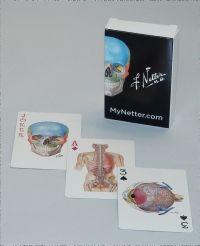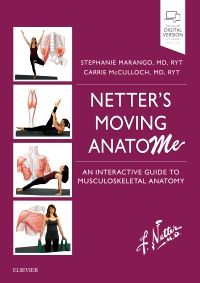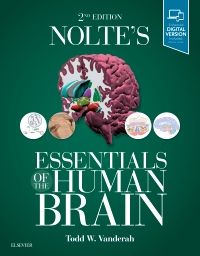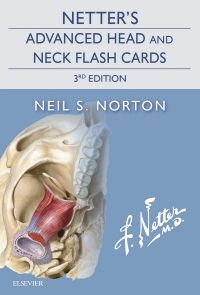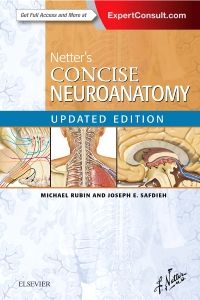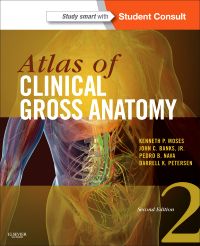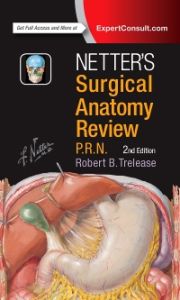**Selected for 2025 Doody’s Core Titles® in Pediatrics and with "Essential Purchase" designation in Neurology**
For fifty years, experienced clinicians and physicians in training have relied on Swaiman’s cornerstone text as their #1 source for authoritative guidance in pediatric neurology. Swaiman's Pediatric Neurology: Principles and Practice, 7th Edition, continues this tradition of excellence under the expert editorial direction of Drs. Stephen Ashwal and Phillip L. Pearl, along with a team of key leaders in the field who serve as associate and section editors in their areas of expertise. Thorough revisions—including new chapters, new videos, new editors, and expanded content—bring you up to date with this dynamic field.
Key Features
- Contains new sections on global child neurology and environment and brain development and a greatly expanded section on neurogenetics, in addition to new chapters on autoimmune epilepsies, immune-mediated movement disorders, and more.
- Offers expanded online content, including additional figures, tables, and text, as well as new personal introductory videos by many chapter authors.
- Covers new, emerging, or controversial topics such as COVID-19, teleneurology, environment and brain development, immune-mediated disorders of the nervous system, functional neurological disorders in children, nonverbal learning disorders, and the pharmacological and future genetic treatment of neurodevelopmental disabilities.
- Provides authoritative coverage of perinatal acquired and congenital disorders, neurodevelopmental disabilities, extensive sections on pediatric epilepsy and movement disorders, nonepileptiform paroxysmal disorders, and disorders of sleep.
- Features nearly 3,000 line drawings, photographs, tables, and boxes that highlight the text, clarify key concepts, and make it easy to find information quickly.
- An eBook version is included with purchase. The eBook allows you to access all of the text, figures, and references, with the ability to search, customize your content, make notes and highlights, and have content read aloud. Additional digital ancillary content may publish up to 6 weeks following the publication date.
Author Information
Edited by Stephen Ashwal, MD, Distinguished Professor of Pediatrics, Former Chief of the Division of Child Neurology and Pediatrics, Loma Linda University School of Medicine, Loma Linda, California, USA and Phillip L. Pearl, MD, Director of Epilepsy and Clinical Neurophysiology, William G. Lennox Chair and Professor of Neurology, Harvard Medical School, Boston, Massachusetts, USA
PART I
Clinical Evaluation
1 General Aspects of the Patient’s Neurologic
History
2 Neurologic Examination of the Older Child
3 Neurologic Examination of Young Children
(Age 1–5 Years)
4 Neurologic Examination of Infants
(Age 0–1 Year)
5 Motor Signs
6 Vision Loss
7 Hearing Impairment
8 Vertigo
9 Taste and Smell
10 Neuropsychological Assessment
PART II
Care of the Child With Neurologic Disorders
11 Counseling Children With Neurologic
Disorders and Their Families
12 Pediatric Neurorehabilitation Medicine
13 Pediatric Palliative Care, Pain, and Symptom
Management
14 Practical Bioethics in Child Neurology
15 Transitional Care for Children With Neurologic
Disorders
16 Practice Guidelines in Pediatric Neurology
17 Measurement of Health Outcomes in Pediatric
Neurologic Disorders
18 Computer Resources, Artificial Intelligence, and
Telemedicine
19 Education and Training of Child Neurologists
and Workforce Issues
PART III
Neurodiagnostic Testing
20 Cerebrospinal Fluid Examination
21 Pediatric Neuroimaging
22 Pediatric Neurophysiologic Evaluation
PART IV
Global Child Neurology
23 Regional and Global Implications for
Children’s Brain Health
24 Implementing Child Neurology Care in
Resource-Limited Settings
25 Adaptation and Implementation of Guidelines
at the Local Level
PART V
Neonatal Neurology
26 Neonatal Neuro-Intensive Care
27 Provoked Neonatal Seizures and Neonatal
Onset Epilepsy
28 Hypoxic-Ischemic Brain Injury in the Term
Newborn
29 Cerebrovascular Disorders in the Newborn
30 Neonatal Nervous System Trauma
31 Injury to the Developing Preterm Brain:
Intraventricular Hemorrhage and White Matter
Injury
32 Perinatal Metabolic Encephalopathies
PART VI
Environment and Brain Development
33 The Neural Exposome and Environmental
Neuroscience
34 Adverse Childhood Experiences
35 The Neurological Impact of Prenatal Substance
Exposure
36 Environmental Pollutants
37 Malnutrition, Nutrition, and Dietary Toxins
38 Poisoning and Drug-Induced Neurologic
Diseases
PART VII
Congenital Structural Defects
39 Introduction to Human Brain
Malformations
40 Disorders of Neural Tube Development
41 Disorders of Forebrain Development
42 Disorders of Cerebellar and Brainstem
Development
43 Microcephaly and Megalencephaly: Disorders
of Brain Size
44 Malformations of Cortical Development
45 Hydrocephalus, Cysts, and Cystic
Malformations
46 Congenital Anomalies of the Skull
47 Prenatal Diagnosis of Structural Brain
Anomalies
PART VIII
Neurogenetics
48 Neurogenetics in the Genome Era
49 Genetic Counseling in the Genomic Era
50 Chromosomes and Chromosomal
Abnormalities
51 Single-Gene Abnormalities
52 Neurocutaneous Disorders
53 Emerging Gene-Based Pathways:
Channelopathies (Epilepsy and Beyond)
54 Emerging Gene-Based Pathways:
mTORopathies
55 Emerging Gene-Based Pathways:
RASopathies
56 Emerging Gene-Based Pathways: Chromatin
Remodeling Disorders
57 The Neuronal Ceroid Lipofuscinoses
PART IX
Metabolic Disorders
58 Approach to the Patient With a Metabolic
Disorder
59 Aminoacidemias and Organic Acidemias
60 Urea Cycle Disorders
61 Diseases Associated With Primary
Abnormalities in Carbohydrate
Metabolism
62 Disorders of Glycosylation
63 Lysosomal Storage Diseases
64 Mitochondrial Diseases
65 Peroxisomal Disorders
66 Neurotransmitter-Related Disorders
67 Disorders of Vitamin Metabolism
PART X
Neurodevelopmental Disorders
68 Neurodevelopmental Disabilities: Conceptual
Framework
69 Intellectual Developmental Disorder and
Global Developmental Delay
70 Regressive and Degenerative Genetic
Neurological Disorders
71 Developmental Encephalopathies
72 Developmental Language Disorders
73 Nonverbal Learning Disorders
74 Dyslexia
75 Attention-Deficit/Hyperactivity
Disorder
76 Autism Spectrum Disorder
77 Cerebral Palsy
78 Developmental Coordination Disorder
79 Treatment of Neurodevelopmental
Disorders
80 Neuropsychopharmacology
PART XI
Epilepsy
81 Overview of Seizures and Epilepsy in
Children
82 Principles of Management and Outcome
83 Pathophysiology of Seizures and Epilepsy
84 Epilepsy Genetics
85 Febrile Seizures
86 Generalized Seizures
87 Focal and Multifocal Seizures
88 Myoclonic Seizures
89 Infantile Epileptic Spasms Syndrome
90 Status Epilepticus
91 Electroclinical Syndromes: Neonatal
Onset
92 Electroclinical Syndromes: Infantile Onset
93 Electroclinical Syndromes: Childhood
Onset
94 Electroclinical Syndromes: Adolescent
Onset
95 Focal Structural Epilepsy
96 Acquired Epilepsies: Trauma, Stroke, and
Tumors
97 Inherited Metabolic Epilepsies
98 Antiseizure Medication Therapy in Children
99 Epilepsy Surgery in the Pediatric
Population
100 Neuromodulation in Epilepsy
101 Ketogenic Diets
102 Behavioral, Cognitive, and Social Implications
of Childhood Epilepsy
103 Mortality in Children With Epilepsy
PART XII
Nonepileptiform Paroxysmal Disorders
104 Headache in Children and Adolescents
105 Breath-Holding Spells and Reflex Anoxic
Seizures
106 Psychogenic Nonepileptic Seizures and
Psychiatric Disorders
107 Functional Neurological Symptom Disorder in
Children and Adolescents
108 Syncope and Postural Orthostatic
Tachycardia Syndrome
109 Brief Resolved Unexplained Events, Apparent
Life-Threatening Events, and Sudden Infant
Death Syndrome
PART XIII
Disorders of Sleep
110 Restless Legs Syndrome and Periodic
Limb Movement Disorder in Children and
Adolescents
111 Nocturnal Paroxysmal Disorders
112 Disorders of Excessive Sleepiness
PART XIV
Disorders of Balance and Movement
113 The Cerebellum and the Hereditary
Ataxias
114 Movement Disorders: An Overview
115 Paroxysmal Dyskinesias
116 Movement Disorders of Infancy
117 Drug-Induced Movement Disorders
in Children
118 Tics and Tourette Syndrome
PART XV
White Matter Disorders
119 Genetic and Metabolic Disorders of the
White Matter
120 Acquired Disorders Affecting the White
Matter
PART XVI
Brain Injury and Disorders of Consciousness
121 Impairment of Consciousness and
Coma
122 Traumatic Brain Injury in Children
123 Abusive Head Trauma
124 Hypoxic-Ischemic Encephalopathy in Infants
and Older Children
125 Disorders of Intracranial Pressure
126 Spinal Cord Injury
127 Determination of Brain Death/Death
by Neurologic Criteria in Infants and
Children
PART XVII
Cerebrovascular Disease in Children
128 Arterial Ischemic Stroke in Infants and
Children
129 Sinovenous Thrombosis
130 Vascular Malformations, Intracerebral
Hemorrhage, and Subarachnoid Hemorrhage
in Infants and Children
131 Cerebral Arteriopathies
132 Coagulation Disorders and Cerebrovascular
Disease in Children
PART XVIII
Infections of the Nervous System
133 Bacterial Infections of the Nervous
System
134 Viral Infections of the Nervous System
135 Fungal, Rickettsial, and Parasitic Diseases of
the Nervous System
136 Neurologic Complications of
Immunization
PART XIX
Immune-Mediated Disorders of the Nervous
System
137 Diagnosis and Management of Pediatric
Neuroimmunological Disorders
138 Autoimmune Encephalitis
139 Autoimmune-Associated Epilepsies
140 Sydenham Chorea, Pediatric Autoimmune
Neuropsychiatric Disorders Associated
With Streptococcus, and Pediatric Acute
Neuropsychiatric Syndrome
141 Immune-Mediated Cerebellar Disorders
142 Neurorheumatology
PART XX
Pediatric Neuro-Oncology
143 Pediatric Neuro-Oncology: An Overview
144 Medulloblastoma
145 Other Embryonal and Pineal Malignancies
of the Central Nervous System
146 Ependymoma
147 Pediatric-Type Diffuse High-Grade Glioma
148 Pediatric Low-Grade Glioma
149 Diffuse Intrinsic Pontine Glioma and Diffuse
Midline Glioma
150 Atypical Teratoid/Rhabdoid Tumors
151 Central Nervous System Germ Cell Tumors
152 Craniopharyngiomas, Meningiomas, and
Schwannomas
153 Pediatric Intradural Spinal Cord Tumors
154 Systemic Cancers and Central Nervous System
Involvement
155 Treatment-Related Neurologic Sequelae of
Pediatric Central Nervous System Tumors
PART XXI
Neuromuscular Disorders
156 Muscle and Nerve Development in Health and
Disease
157 Diagnostic Testing in Children With Suspected
Neuromuscular Disorders
158 Clinical Assessment of Pediatric Neuromuscular
Disorders
159 The Floppy Infant
160 Classic Proximal Spinal Muscular Atrophy
161 Other Motor Neuron Diseases of
Childhood
162 Genetic Peripheral Neuropathies
163 Acquired Peripheral Neuropathies
164 Inflammatory Neuropathies
165 Congenital Myasthenic Syndromes
166 Acquired Disorders of the Neuromuscular
Junction
167 Duchenne and Becker Muscular
Dystrophy
168 Congenital, Limb-Girdle, and Other Muscular
Dystrophies
169 Congenital Myopathies
170 Metabolic Myopathies
171 Inflammatory Myopathies
172 Channelopathies: Myotonic Disorders
and Periodic Paralysis
173 Multidisciplinary Management of Children
With Neuromuscular Conditions
PART XXII
Systemic and Autonomic Nervous
System Diseases
174 Endocrine Disorders of the Hypothalamus and
Pituitary in Childhood and Adolescence
175 Disorders of the Autonomic Nervous
System: Autonomic Dysfunction in Pediatric
Practice
176 Disorders of Micturition and Defecation
177 Neurologic Disorders in Children With
Heart Disease
178 Neurologic Disorders Associated With Renal
Diseases
179 Neurologic Manifestations and Disorders
Associated With Gastrointestinal Diseases
Index





